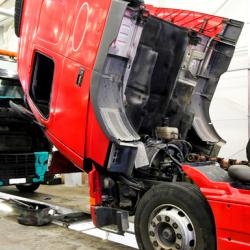
How often do you think about your vehicles’ health? Once or twice a year? Have you ever considered that it should be a constant, year-round focus? You might once you see the following stats:
-
Nearly 10 percent of average fleet operating expenses are due to maintenance and repairs
-
In the past seven years, maintenance and repair costs rose 53 percent
-
On average, lost revenue when a vehicle is in for maintenance spans between $1,000-1,500 a day
-
On-road breakdown repairs cost an average 250 percent more than those repairs done at a fleet’s service center
-
Average time to diagnose a vehicle problem is 45 minutes
While these metrics are staggering and can easily chip into thin profits should a fleet have one or more vehicles out of service, it shouldn’t be considered the only way that fleets should have to operate. Fleet uptime and safety can go hand in hand with technology that monitors vehicle health and diagnostics.
The vehicle databus can tell us a lot about the health of the vehicle before it breaks down—the key is how the data is interpreted. Transforming how fleets, regardless of size, approach maintenance and repair costs is Extended Fault Monitoring (EFM), which takes traditional diagnostic capabilities and expands it to new levels with deeper insight into potential issues that may arise. More robust than Fault Monitoring, EFM delivers data in near real time, integrates with tier one suppliers Navistar and Cummins, and is available across Omnitracs Intelligent Vehicle Gateway (IVG) and MCP50, 110, and 200 platforms.
The response from fleets that have implemented it into their broader fleet management technology mix has been positive. Fleet managers can understand fault codes quickly and receive comprehensive vehicle health reports. Maintenance and repairs can be scheduled proactively, and action plans based on severity can be outlined.
And knowing that the trucking industry never stays the same for very long, EFM is scalable, which becomes even more important as vehicles continually become more advanced and emissions standards get tighter every few years. Functionality across OEMs, suppliers, and others are critical to attaining maximum value for your fleets’ operations.
It’s a given that a truck is likely to break down at least once per year, and the minimum cost to check out that non-functioning vehicle is $250 dollars which doesn’t even account for the repairs that could cost upwards of thousands of dollars. No matter the size of your fleet, no one can sustain business if their equipment is breaking down and racking up costly repairs. EFM lessens the chance and risk, making maintenance more regular, predictable and manageable.